
Pachliopta hector, the crimson rose, is a large swallowtail butterfly belonging to the genus Pachliopta (roses) of the red-bodied swallowtails.
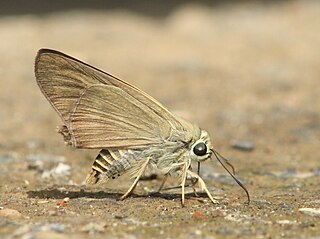
Badamia exclamationis, commonly known as the brown awl or narrow-winged awl, is a butterfly belonging to the family Hesperiidae. It is found in south and southeast Asia, Australia, and Oceania.

Hasora badra, the common awl, is a butterfly belonging to the family Hesperiidae, which is found in India.

Hasora chromus, the common banded awl, is a butterfly belonging to the family Hesperiidae which is found in the Indian subcontinent, Southeast Asia and Australia.
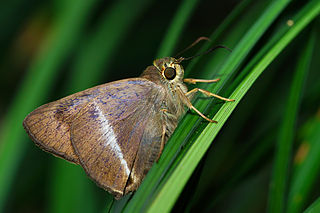
Hasora taminatus, the white banded awl, is a butterfly belonging to the family Hesperiidae, which is found in Asia.
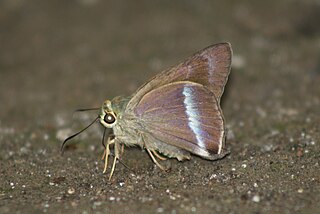
Hasora vitta, the plain banded awl, is a butterfly belonging to the family Hesperiidae which is found in India and parts of Southeast Asia.

Aeromachus pygmaeus, the pygmy scrub-hopper is a butterfly belonging to the family Hesperiidae. The species range is Nilgiris, Wynaad, Coorg, Kanara, Assam to Burma and Thailand.
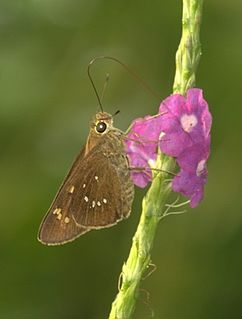
Pelopidas conjuncta, the conjoined swift, is a butterfly belonging to the family Hesperiidae found in India.

Quedara basiflava, the yellow-base flitter or golden flitter, is a butterfly belonging to the family Hesperiidae and is endemic to India's Western Ghats.

Gerosis bhagava, the common yellow-breast flat, is a butterfly belonging to the family Hesperiidae. The species was first described by Frederic Moore in 1865.

Spialia galba, the Indian grizzled skipper, is a hesperiid butterfly which is found in South Asia and parts of Southeast Asia.
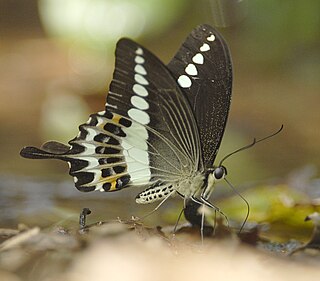
Papilio liomedon, the Malabar banded swallowtail, is a member of the swallowtail butterfly family found in southern India. Earlier considered a subspecies of the banded swallowtail of southeast Asia, it is now considered a distinct species.

Pachliopta pandiyana, the Malabar rose, is a swallowtail butterfly belonging to the genus Pachliopta, the roses or red-bodied swallowtails.

Papilio castor, the common raven, is a species of swallowtail butterfly found in Cambodia and South Asia.

Papilio elephenor, the yellow-crested spangle, is a species of swallowtail butterfly found in Northeast India. Following decades without confirmed sightings, it was rediscovered in 2009 in Assam.

Papilio buddha, the Malabar banded peacock, is a species of swallowtail butterfly found in the Western Ghats of India.

The Nilgiri clouded yellow, Colias nilagiriensis, is a small butterfly native to Shola forests of the Western Ghats. It belongs to the family Pieridae.

Spalgis epius, the apefly, is a small butterfly found in the Indomalayan realm that belongs to the lycaenids or blues family. It gets its name from the supposed resemblance of its pupa to the face of an ape.

Ariadne ariadne, the angled castor, is a species of nymphalid butterfly found in Asia.
























